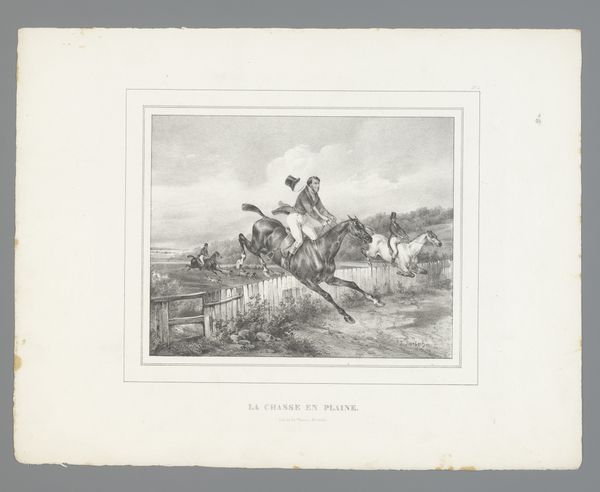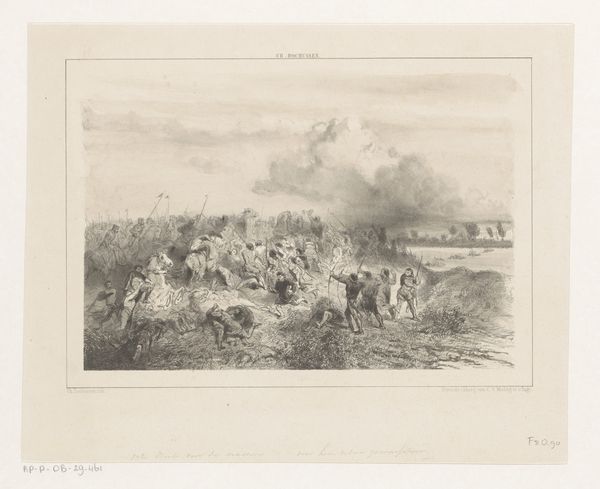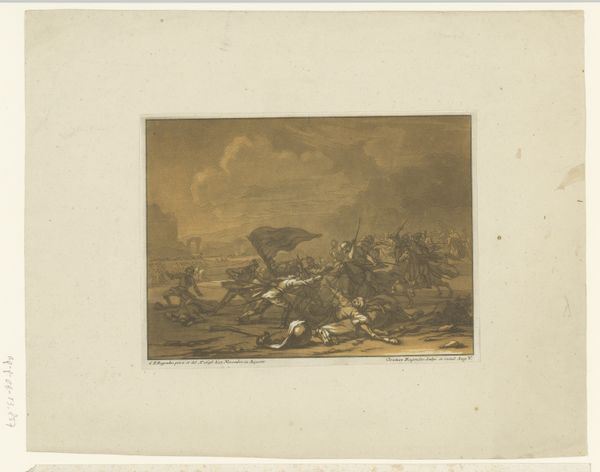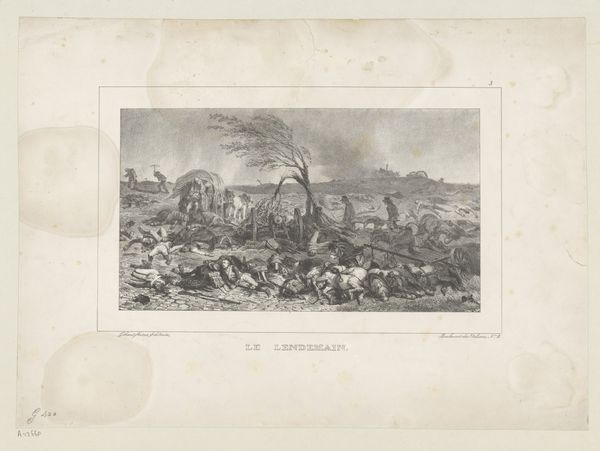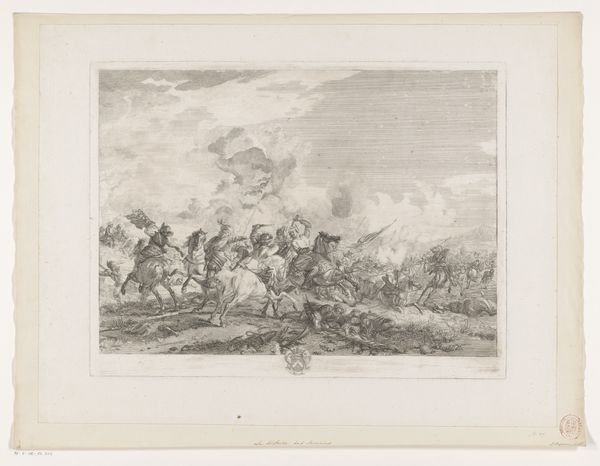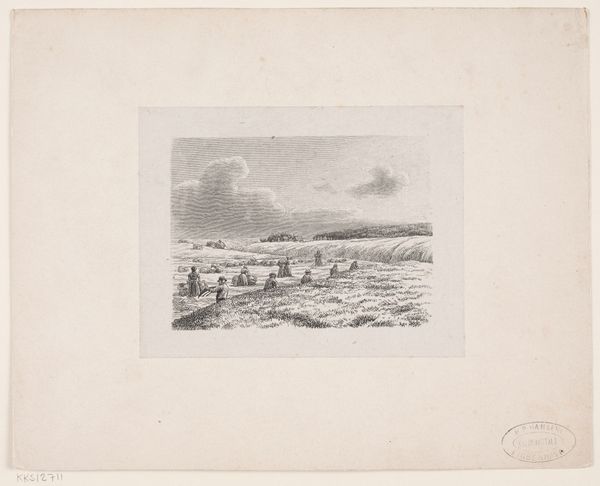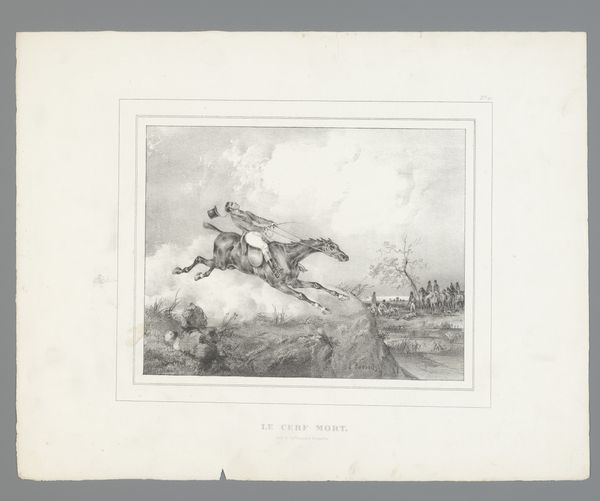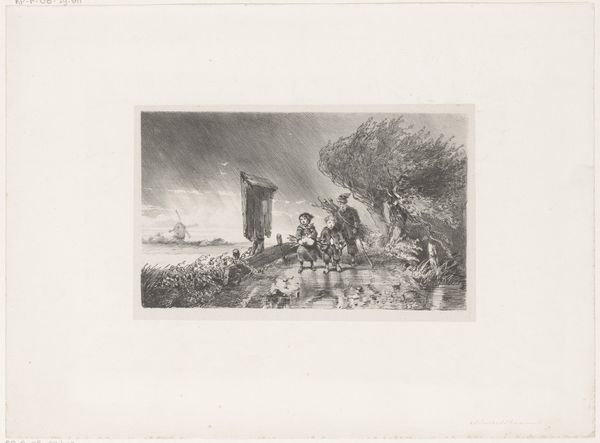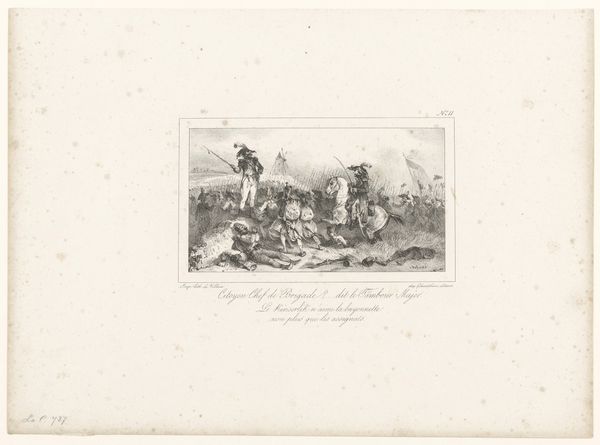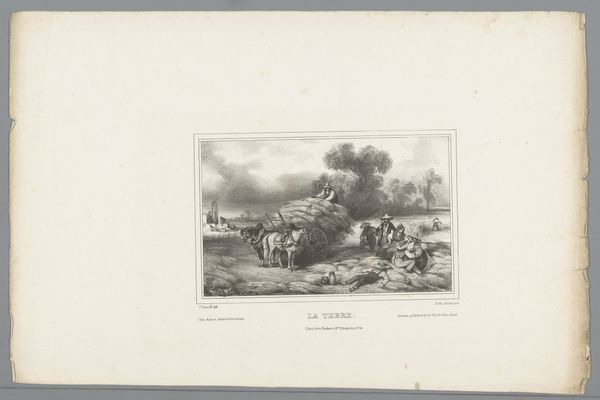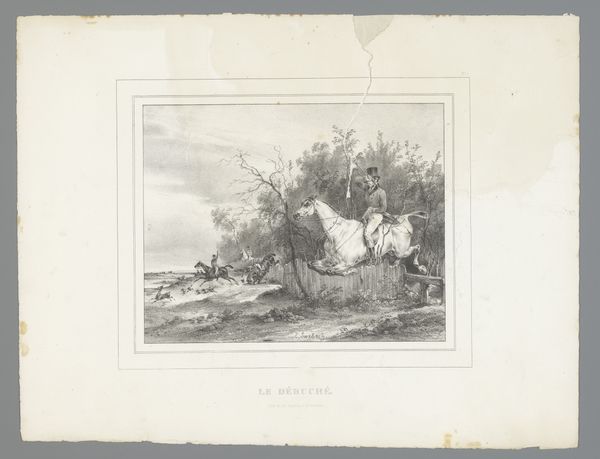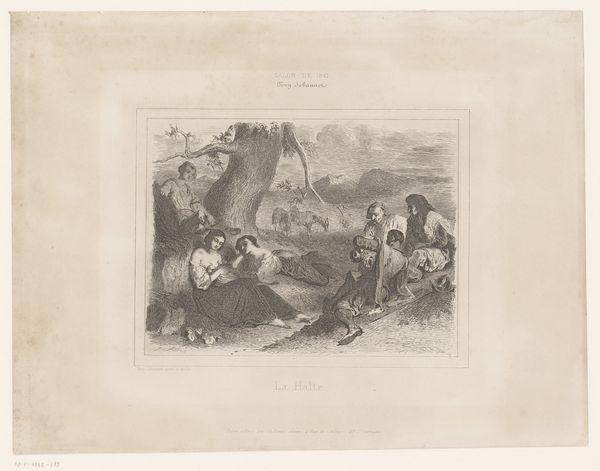
Man wordt van paard geworpen tijdens de hertenjacht c. 1825 - 1827
0:00
0:00
print, engraving
#
narrative-art
# print
#
landscape
#
romanticism
#
genre-painting
#
history-painting
#
engraving
Dimensions: height 273 mm, width 350 mm
Copyright: Rijks Museum: Open Domain
Editor: So this engraving, "Man wordt van paard geworpen tijdens de hertenjacht," created around 1825 by Bernard Édouard Swebach, depicts a chaotic hunting scene. I’m struck by how the detail achieved through engraving captures the dramatic moment of the fall. How can we interpret this work through its material existence? Curator: Let's consider the process of creating an engraving like this. Each line, each shadow, meticulously carved into a metal plate, then transferred to paper. Think about the labour involved, the hours spent crafting this image for mass production. This wasn’t a unique object for a wealthy patron, but a reproducible print potentially circulated widely. How does that shift our understanding of its value? Editor: I see, it moves away from the auric value of a singular artwork towards something more accessible. Does that mean the subject matter, the aristocratic hunt, gains a different meaning through this democratized medium? Curator: Precisely! The image depicts a specific social class engaging in leisure, a performance of power. But the means of production, the engraving process, makes that image available, as a commodity, for consumption by a broader audience. Are they admiring this display, perhaps aspiring to it, or are they consuming it with a more critical eye, aware of the social and economic divides it represents? Consider also, what is being consumed and how is the work being distributed, impacting its cultural function. Editor: So the materiality and means of reproduction become integral to the work’s social and political meaning, transforming a depiction of aristocratic life into something more complex through its availability and reception. The method of reproduction opens avenues to critique the status it ostensibly presents. Curator: Exactly! It reveals how art isn't just about the image itself, but also the social and material conditions of its making and circulation. Hopefully that can give you a greater insight into how to interrogate art. Editor: Thanks so much; I had never considered labor as important to interpreting art; my view of the piece has transformed significantly!
Comments
No comments
Be the first to comment and join the conversation on the ultimate creative platform.
